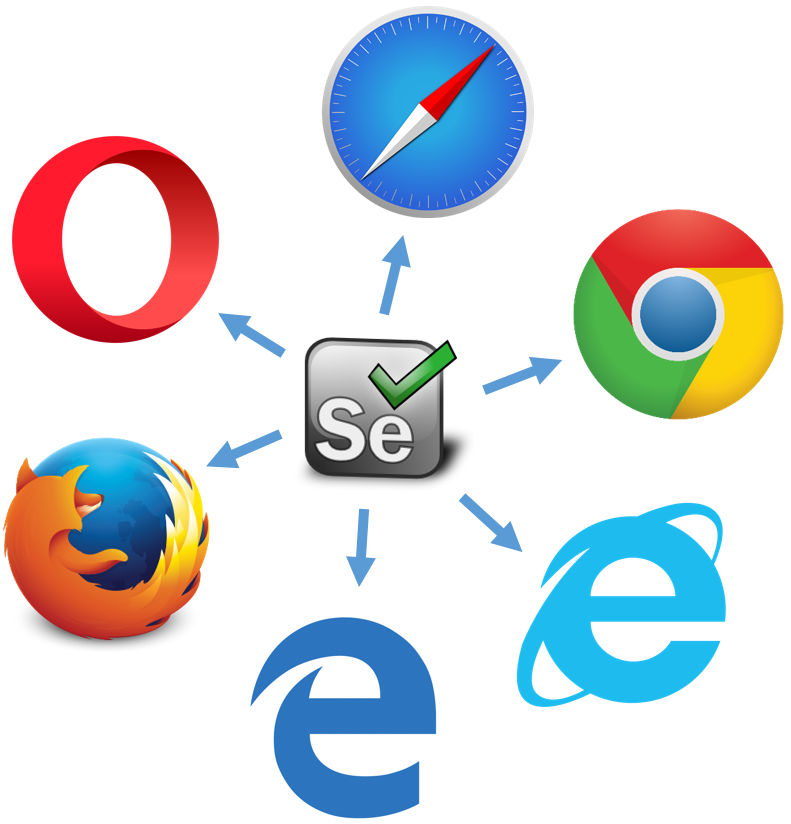Cross-browser testing has emerged as a critical step in software development since web applications improve daily. It ensures that web applications function correctly and appear consistent across browsers and devices. With the rise of various web browsers and their frequent updates, it can be challenging for developers to test their applications manually on each browser and version. This is where automated cross-browser testing tools like Selenium come in handy. This article will discuss cross-browser testing in Selenium and how one can use it.
What is Cross Browser Testing in Selenium?
The process of checking how well a website is working on different browsers, such as Internet Explorer, Chrome, and Firefox, is called Cross-browser testing. If a website is Cross-browser compatible, it can work on different browsers and operating systems. The goal is to compare the expected behavior of an application across other instances. Sometimes, the same test script passes in one or more cases but fails in another.
But testing a website on multiple browsers is very time-consuming. Think about a situation where a user runs 100 test cases. Imagine that you have to run the same tests on five different browsers. But if Selenium Testing Automation is used to automate these tests, they can run simultaneously and in less time. It will also stop problems caused by mistakes made by people.
How To Test In Different Browsers With Selenium?
Checking whether your web application functions correctly across several browsers is helpful. Software testing includes cross-browser testing, which is crucial. Selenium is a well-liked web application testing framework that enables cross-browser testing. Here’s how to test across browsers using Selenium:
- Decide which web browsers you wish to use to test your web application. Chrome, Firefox, Safari, and Internet Explorer are popular browsers.
- Set up the drivers for every web browser you intend to use to test your app. Each browser’s driver needs to be downloaded and installed on your computer.
- Write a Selenium script that performs the subsequent actions:
- Create a new WebDriver object for each browser you wish to test.
- Navigate to the online application’s URL that you want to use.
- Implement your web application as necessary.
- Verify that your application performs the desired function.
- Stop the window in its tracks.
- Examine your cross-browser testing findings to discover whether any browsers behave differently. The web application has to be updated and tested once more if any issues are found.
To expedite the process, use Selenium-compatible browser testing tools, such as BrowserStack, Sauce Labs, or Cross Browser Testing. These tools allow you to test across multiple browsers and operating systems and speed up the testing process by allowing you to run multiple tests simultaneously.
Best Ways To Test In Different Browsers With Selenium
Here are a few recommendations for utilizing Selenium to test across several browsers.
- Locate and closely examine the Browser-OS configuration.
You must have the appropriate browser, browser version, and operating system to utilize Selenium for cross-browser testing. Every browser has a distinct understanding; some update frequently—at least once a month. Which browsers are required to be used to test a site must be decided by QAs. Choose the combinations that most of the target audience will most likely employ when determining the most crucial ones.
- Properly use the Task runners and JavaScript libraries.
It’s crucial to utilize the appropriate JavaScript tools compatible with all browsers and match the site’s needs because JavaScript is a vital component of creating web apps. As they can be programmed to perform specific tasks, Grunt and Gulp may be suitable options. By including tools like linting, compilation, minification, and others that enhance the quality of the code after collection, they also improve the application’s overall performance.
- Carefully select the libraries and frameworks.
Before you build web apps, you should know the libraries and frameworks needed for testing. The most dynamic and vivid user experience is possible with the most recent CSS frameworks. The engines used by different browsers to render pages differ. Thus, they might only function properly with some of them. Read the browser’s instructions to determine if the newest CSS or JS libraries or frameworks are supported before using them.
- Make Internet Explorer better.
Internet Explorer does not support complex CSS frameworks and styles. Even the most exquisite website will likely have many design features broken when viewed through Internet Explorer. To fix this, create a special stylesheet for IE and apply a doctype hack.
HeadSpin for Cross-browser Testing
HeadSpin is an essential tool for cross-browser testing in software development. It simulates real-world network conditions, enabling developers to evaluate application performance and functionality across browsers, devices, and operating systems. With an extensive device library, HeadSpin empowers users to test websites and applications on various virtual and physical devices, ensuring compatibility and a seamless user experience.
Detailed reports and analytics generated by the platform highlight any encountered issues, facilitating efficient debugging and optimization. By streamlining the cross-browser testing process, HeadSpin saves valuable time and effort while enhancing the overall quality of web and mobile applications.
Final Words
In conclusion, using several browsers simultaneously is an excellent approach to use cross-browser testing. Selecting the browser we wish to use is the sole complicated step in the straightforward procedure of cross-browser testing. Selenium cross-browser testing is crucial because it ensures that the web application functions correctly across all browsers and provides a positive user experience.


